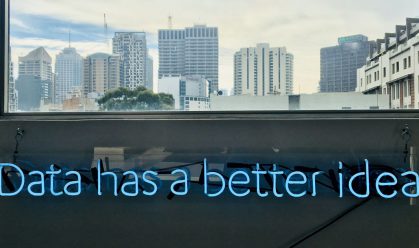Facebook Advertising has become today’s most efficient tool for social media marketing which is why we launched our “Understanding Facebook Ads” blog series.
More from this series: Understanding Facebook Ads: 7 easy tricks to help you optimize your Facebook Ads and save money in the process.
One of Facebook’s most beneficial advertising features is their objective breakdown. If you’ve used Facebook Ads before you know that the first step in the ad building process is to choose your marketing objective. You can create an ad based off of one of three objectives: awareness, consideration, and conversion. Understanding these different objectives and how they relate to your company’s goals is essential to the success of your marketing campaign, so we’ve put together a quick little guide to understanding Facebook’s Advertising Objectives.

We like to think of Facebook’s ad objectives like this:
Awareness → Cold Traffic: Use these ads to target people who are unfamiliar with your brand
Consideration → Warm Traffic: Use these ads to target people who are familiar with your brand but have yet to become engaged
Conversion → Hot Traffic: Use these ads to target people who are familiar with your brand and are likely to become customers
To better understand why we choose to target certain traffic with certain ads let’s dig deeper into what Facebook does with each objective. For each objective, Facebook has sub-objectives that each has a different goal or desired outcome.
Awareness
This category is aimed at generating interest in your brand and is broken down into two categories.

Brand Awareness:
With this objective, Facebook is focused on getting more impressions by trying to get your ad on as many screens as possible. This objective is not aimed at getting more engagement on your ad or traffic on your website, so it should be used only when your company’s goal is to increase attention to your brand.
This can become costly and does not generate high ROI’s, so it is often not the best choice for a small business with tighter budgets.
Reach:
This objective is similar to brand awareness because it focuses on ad impressions. However, this objective is more beneficial to companies aiming to increase awareness within a target audience. Facebook’s only goal will be to deliver your ad to as many people within your target audience. This is important to understand as we explore Facebook’s other objectives.
Consideration
Consideration is broken down into five categories and is aimed at getting people to thinking about your brand and begin seeking information.
Traffic:
By selecting traffic, you’re telling Facebook that your desired outcome is to send people from Facebook to your site (this is typically most effective for content ads). Facebook will then focus on delivering your ad to people who are more likely to click to your site.
Notice how this is different than increasing impressions. Facebook will filter your target audience and only deliver the ad to people are likely to click on your ad. This decreases the amount of people who will see your ad but increases the amount of meaningful interactions with your ad.
Engagement:
This objective is aimed at getting people to like, comment, and share your ad as opposed to driving people to your site. This feature is beneficial for increasing page likes and event brand awareness. As more people engage with your ad, the more likely that ad is to be shown to more people.

Facebook increases engagement in your ad by analyzing your target audiences’ past behavior and delivering the ad to people within that audience who are more likely to engage.
App Installs:
This objective is similar to engagement and traffic. If your company’s goal is to increase more app installs, selecting this objective will tell Facebook to deliver your ad to people within your target audience who are likely to exhibit that behavior when they see your ad.
Video Views:
If your ad incorporates a video, this is a good objective to choose. This will lead Facebook to target people who are more likely to engage with video content.
Lead Generation:
This is a very helpful objective for companies looking to grow their lists. This objective allows you to collect leads within Facebook. When people within your target audience click this ad they are presented with a form to submit their contact information, which will then go into a list that you automatically merge to your existing list or download and import depending on your CRM system.

Like all the other consideration objectives, Facebook will deliver the ad to people likely to submit lead generation forms. One thing to note when selecting this objective is the entire interaction exists within Facebook. This is convenient for people who don’t want to leave their feed in order to interact with your ad, but this also means people will not be interacting with your site.
If you wish to drive traffic while still collecting leads, you can run a traffic ad that directs them to landing pages that contain a lead generation form. This will allow you to collect leads before driving people to your homepage.
Conversions
This objective is broken into three categories and is aimed at getting people who are interested in your brand to make purchases.
Conversions:
This is perfect for companies who want people to take a certain action when they come across their ad, whether it be to make a purchase, download a file, or subscribe to an offer.
In order to use this feature, you must have Facebook Pixel installed on your site. Facebook will use the data from the pixel to analyze past conversions and target people who are similar to those who have converted in the past.
Product catalog sales:
This objective is only beneficial to those who have an online store. This allows you to connect your store to Facebook and directly promote your products on peoples’ feeds.
Store visits:
Facebook’s store visit objective is beneficial for businesses that have physical locations. This allows you to target people near your store’s location. Facebook will use location services to deliver the ad to people within your target audience who are in the nearby area.

Now that you have a better understanding of the different ad objectives and how Facebook works to achieve each goal, you can see why it’s important to choose an objective that is committed to reaching your desired outcome. Choosing a reach objective when you want to get more page likes or choosing a traffic objective when you want to increase sales can quickly deplete your marketing budget and negatively impact your ROI.
Building successful Facebook Ads is a very integrated process, and understanding your company’s goals and how Facebook Ads can help you achieve them is only one step in optimizing your strategy.
To stay up to date and grow your Facebook Ad expertise, subscribe to our mailing list and we will send you the latest installments to our “Understanding Facebook Ads” series.
Next, we will uncover you how to design ads that complement your Facebook Ad objective.
Hope you enjoyed! Let us know what you think and comment below.









